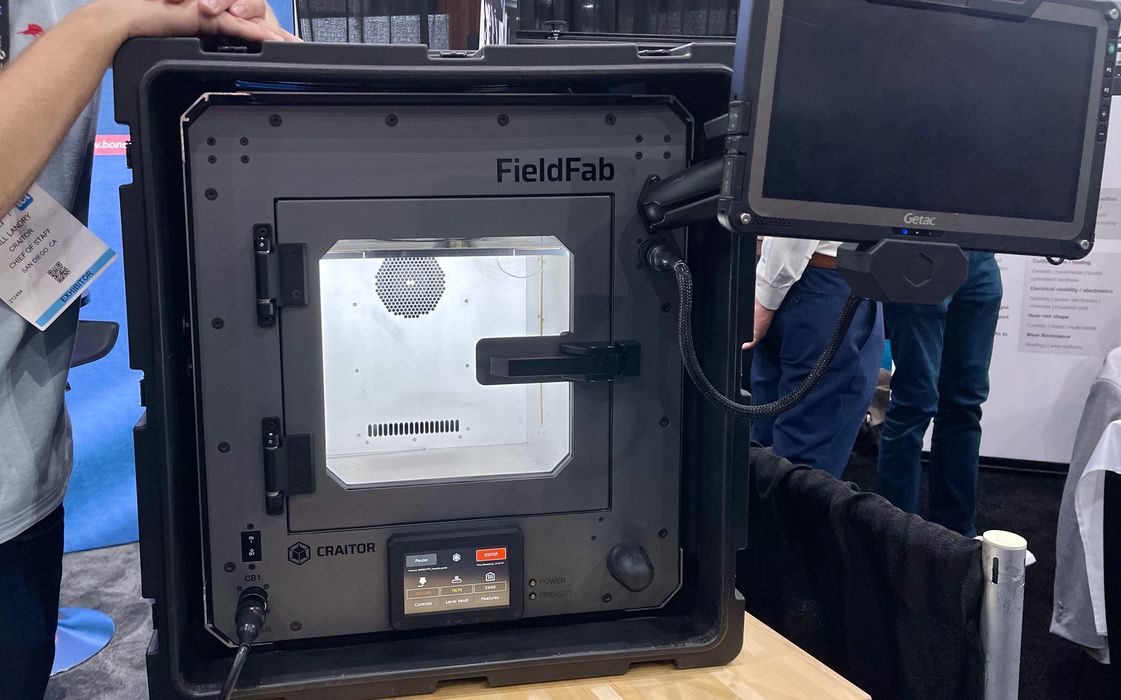
We had a close look at what is no doubt the world’s most rugged 3D printer, the Craitor FieldFab.
The machine is termed an “expeditionary 3D printer” by the company, and that is not just words. This device is fully capable of operating in the field, so long as it is supplied with power, filament and 3D models. In fact, it already boasts 25+ field deployments with the US military.
As a high temperature 3D printer, it doesn’t have radically different specifications, at least for the basic elements:
- Build volume of 280 x 280 x 280 mm
- Hot end temperature up to 500C
- Print plate temperature up to 200C
- Heated chamber temperature up to 80C
- Supports printing all standard polymer filaments and composites, including PEI/ULTEM, TPU, PA-CF, PETG, and more
- Standard power connection, 80-264V
The high temperature and material capabilities mean it is entirely possible to print parts that can often replace metal parts. CF materials in particular are quite strong, so long as the operating temperatures are not extreme.
Where the differences begin are in the FieldFab’s operational temperatures. This device can operate anywhere between -40C to +50C (-40F to +122F). That’s basically the operating range of humans, so anywhere you can be, you can print.
The housing is rugged, made from aluminum and plastic, and provides a seal against exterior conditions. It includes humidity monitoring and cycling, and is able to withstand rain and condensation. It’s also impervious to reasonable vibrations and impacts.
According to Craitor’s Will Landry, this is the only 3D printer that has these properties. He told us:
“There’s a difference between being able to transport a 3D printer and being able to operate a 3D printer in rough conditions.”
As an example, he explained that their equipment is able to fully operate on board a moving marine ship, while many other 3D printers can merely be transported on ships, but not actually operated.
Military organizations have multiple use cases for this 3D printer. Emergency spare parts can be quickly produced directly in the field, saving on considerable shipping delays. It’s also possible for new part designs to be quickly rushed to where they are required by simply printing them on the FieldFab.
The FieldFab is so rugged it actually qualifies for MIL-STD-810H. This is a standard that ensures the device is able to withstand its proposed capabilities through chamber test methods. In other words, the FieldFab has literally experienced the same conditions it has been designed to operate within.
The FieldFab is now for sale, and has been purchased by multiple military organizations. We’re told the price of the device is a bit more than you’d expect to pay for a simple desktop 3D printer, at near US$100,000. But that’s what you need to pay to get a 3D printer that can operate anywhere.
Via Craitor
